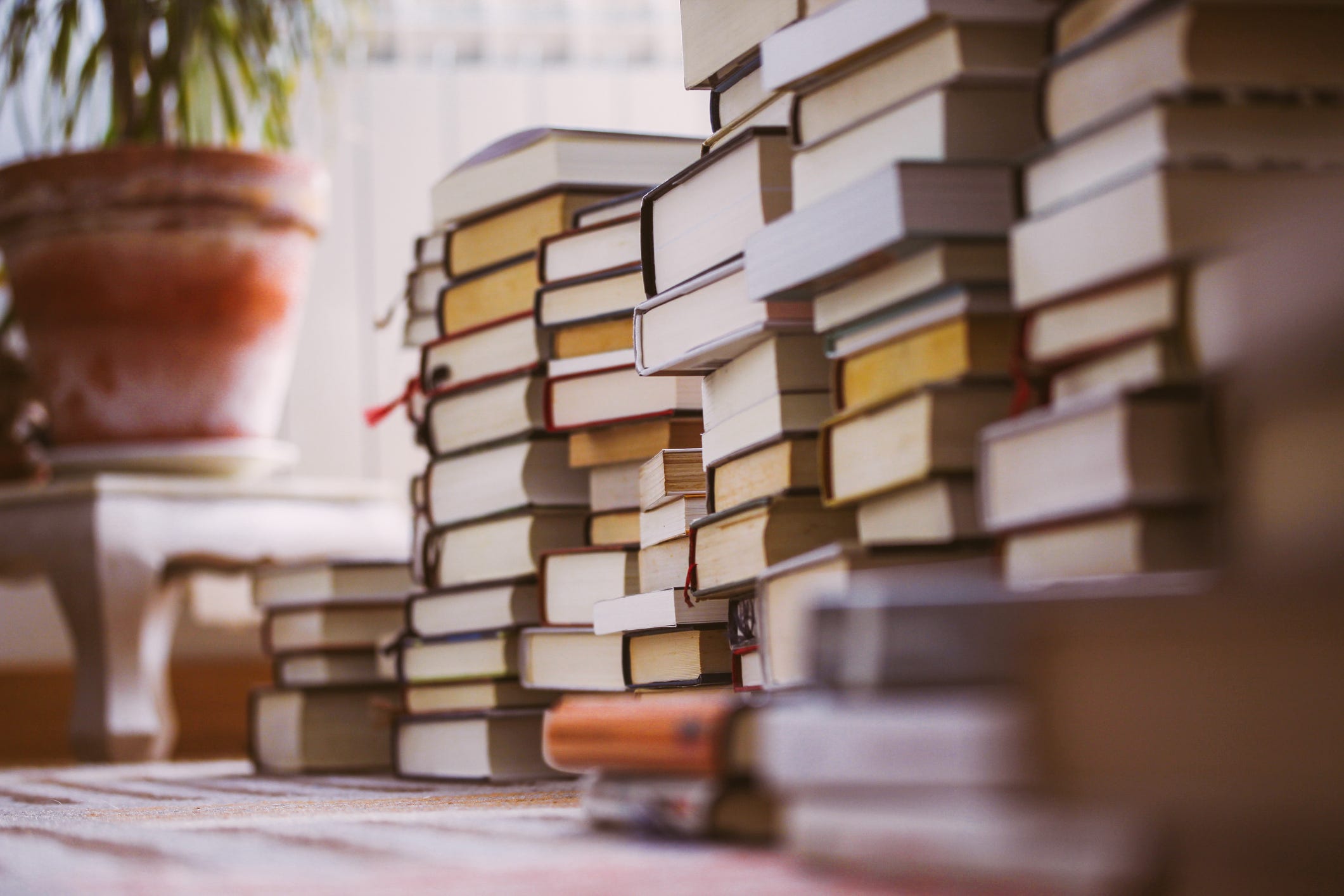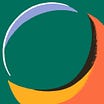|
 |
Building My Book Collection—Again
My decades-long project to build a book collection is starting anew
I have been into books for as long as I can remember, but my lust for printed matter did not begin with books. Rather, it was magazines that first got my attention. In the 1950s, my family made a weekly trip to the local newsstand, Readmore, in Anderson, Indiana, back when almost every city had a big newsstand. Like many other little boys, I was fascinated by trains. So at the age of 6, I convinced my parents to buy me train magazines. Now, 66 years later, I still read every issue of the excellent magazine “Trains.” Some things never change.
Those train magazines started me on my own journey. Over the course of more than six decades, I assembled one of the largest personal libraries in the nation—about 70,000 books, plus thousands of brochures, maps and pamphlets. What led me to do this? Quite simply, books are the world—actually, they’re many worlds, each opening up new worlds themselves. They create for us a lifelong journey—and for me, it’s a journey that’s just starting again.
A Love Affair With the Printed Word
A couple of years after those trips to the newsstand, my dad taught me how to read a roadmap, and I became the navigator on our family vacations. Maps are works of art—full of color, and each one unique. Those maps led me to the Rand McNally Road Atlas, then one of the top-selling annual publications in America. Anyone who traveled the nation’s highways had this remarkable book in their car. When I bought my first book with my own allowance, at 8 years old, it was a 50-cent Rand McNally Atlas of the World. From the very beginning, I felt books’ power to bring me the world.
Thanks to that atlas, I discovered new countries and parts of the world. I quickly developed the habit of studying maps like many people read fiction—dreaming about what it was like to be there. What about that road to Yellowknife in the far north of Canada? Such a long drive to nowhere. What must that be like?
As I read, more worlds opened up to me—and those worlds kept expanding. My brother had a copy of the annual World Almanac, the greatest American fact book, over a thousand pages of data and information. It quickly became my favorite book, and it still is. Each page covered a new subject—the largest cities in the world, the list of movie stars, who won the Kentucky Derby every year since its inception, the biggest magazines by circulation, which states grew the most corn, lists of every president, king, senator, governor and prime minister.
By the time I was 12, I had the heart of a reference librarian. I remembered each book, what information it contained, often the author’s name, always the color of the cover, and most importantly, what future questions it could answer for me. Every year, sometimes every day, I became interested in a new subject—I’m still that way. I lost myself in footnotes and bibliographies, searching for more books to expand my understanding. Later in life, when I had the money, I wouldn’t buy just one book, I would buy virtually every book on the subject—a mini-library.
I had great high school teachers, and soon I was reading up on world history, the religions of the world, geometry, physics and chemistry. Then, when I went off to the University of Chicago, many more doors opened up, and the number of subjects that intrigued me skyrocketed. While the classes and professors introduced me to a great range of ideas, even more important to my learning were my fellow students. The guy who only spoke about philosophy. The math nut who never wore more than a windbreaker even when it was below zero but could solve any math problem for you in an instant.
Every room down the dorm hallway was a doorway to a different world—I could find anthropology, sociology, psychology, chemistry, physics, music and art junkies. In visits to professors’ homes, I would wander off by myself and study their bookshelves. What intrigued them? What books had I not seen before? I bought yet more books, yet more magazines.
My first job after college was picking retail stocks as a junior stock analyst at Citibank in New York. I learned a huge amount about retailing—a subject I’ve always loved—from my veteran boss and the many retail executives I interviewed. Each day, I would have lunch with a different industry analyst from our department: computers on Tuesday, coal mining on Wednesday, cosmetics on Thursday. But after two years, I had learned what I could about retailing from the Wall Street view.
So I bought a 99-days-for-$99 bus ticket and set up over a dozen interviews with department stores from coast to coast. I ended up joining Federated Department Stores (now named Macy’s) and became, of all things, the book department buyer for their then-booming Dallas division, Sanger-Harris. I was not a great buyer, but I asked a million questions of all the publishers I dealt with and studied the retail book industry.
Yet again, I kept up the habit of learning about different industries—I had lunch Tuesday with the calculator buyer, Wednesday with the towel buyer, Thursday with the belt buyer. What is your industry like? How does it differ from mine? Which companies are the biggest and the best? What makes them the best? I borrowed against future paychecks to finance my book spending as I visited every bookstore, “checking on the competition.” I came to the opinion that Americans needed more big bookstores, especially ones that offered great value. So I made books my career: By 1981, at the age of 30, I decided to take the plunge and start my own retail company, Bookstop.
When I sold Bookstop in the late 1980s, I used my share of the proceeds to pay for an around-the-world trip—I spent a week in a Buddhist city, a week in a Hindu city, a week in an Islamic city. And, I’m sure it won’t surprise you at this point, I visited every bookstore and department store along the way. I had some real cash now, and spending $2,000-$3,000 in one visit to a bookstore was no problem. I knew how to interpret cover design, so I could navigate a bookstore, no matter the language. Along the way, I visited more than 600 museums. Most had gift shops with books for sale. There is no better, more portable, or more affordable souvenir of a place than a book about it. Often, they can only be found when you are there.
As you can see by now, I had—and continue to have—something of a book addiction. But to be honest, I’ve never regretted buying a book. Even in today’s digital age, books have a very important place: At least 70% of the information in my library was nowhere to be found on the internet. Old books were not all digitized, and newer books were under copyright. Even today, many of the books I use the most, like Roget’s International Thesaurus, are not available in digital form.
Starting Over
Unfortunately, when I refer to my book collection, I must do so in the past tense. In October 2022, my 70,000 books were sadly lost in a house fire. So even though I had spent a lifetime building my book collection, I’m starting the process anew.
To stave off emotional collapse and preserve my sanity after the fire, I soon re-evaluated what I had done with my life—a life of bookselling, publishing, writing and especially book collecting. After meditating on it, I realized that my booklust was undiminished. Thanks to the generosity of my many friends, I soon had a small nest egg that enabled me to buy a new home and restart my book collection.
As of this writing, it is up to about 2,000 books, the ones that were of the most value to me, including a collection of all the “Fortune” magazines from 1930 to 1969. I have over 50,000 titles on my Amazon wish list, five books arriving today, and an online shopping cart ready to buy a dozen more. And I continue to discover new ideas, new interests and new (often very old) books. As I work to rebuild my collection again, it’s an opportunity for me to revisit the ideas and tips that helped me build it in the first place:
Visit bookstores in person. As much as I love buying books online, nothing can replace a great bookstore for the discovery of new books, new ideas and new ways of thinking. The serendipity of stumbling across a book still gives me a rush, especially if it is in a category that I did not think I had any interest in. I usually pick my hotels to be near the biggest bookstore in town.
Book learning should work in tandem with experiential learning. Expanding my mind was key to building my collection—and in order to expand my mind, I had to learn more about the wide range of fields out there, fields I knew nothing about. Remember those industry analyst lunches I talked about earlier? They helped me learn more about how those industries worked, and as I talked with those experts, I often found their passion to be infectious. As a result of learning about their experiences, I wanted to find out more about their fields—meaning it was time for a trip to the bookstore.
You don’t have to read them all. Books can have a place in your collection even if you plan to never read the whole thing. I very rarely read a book cover to cover or start at the front and end at the back. Instead, when I get a book, I study the table of contents and the index. I search for things I know something about, reading those sections first, so I can make connections. I am a very slow reader, often reading every sentence twice, then pausing to think about what it means, what it says and what it does not say. How does that relate to what I already know or think? Then the book goes on the shelf as a book for future reference, one I can return to over and over.
Perhaps it is unfortunate that there is no twelve-step program for book addicts, but I regret nothing. My life and, I hope, my students, my friends, my audiences and my readers have been enriched by the exploration of the world around me that books have enabled. Books made me a world traveler and time traveler. And this excites me as I begin my collection because I can look forward to an enriching journey again.
You’re currently a free subscriber to Discourse .

